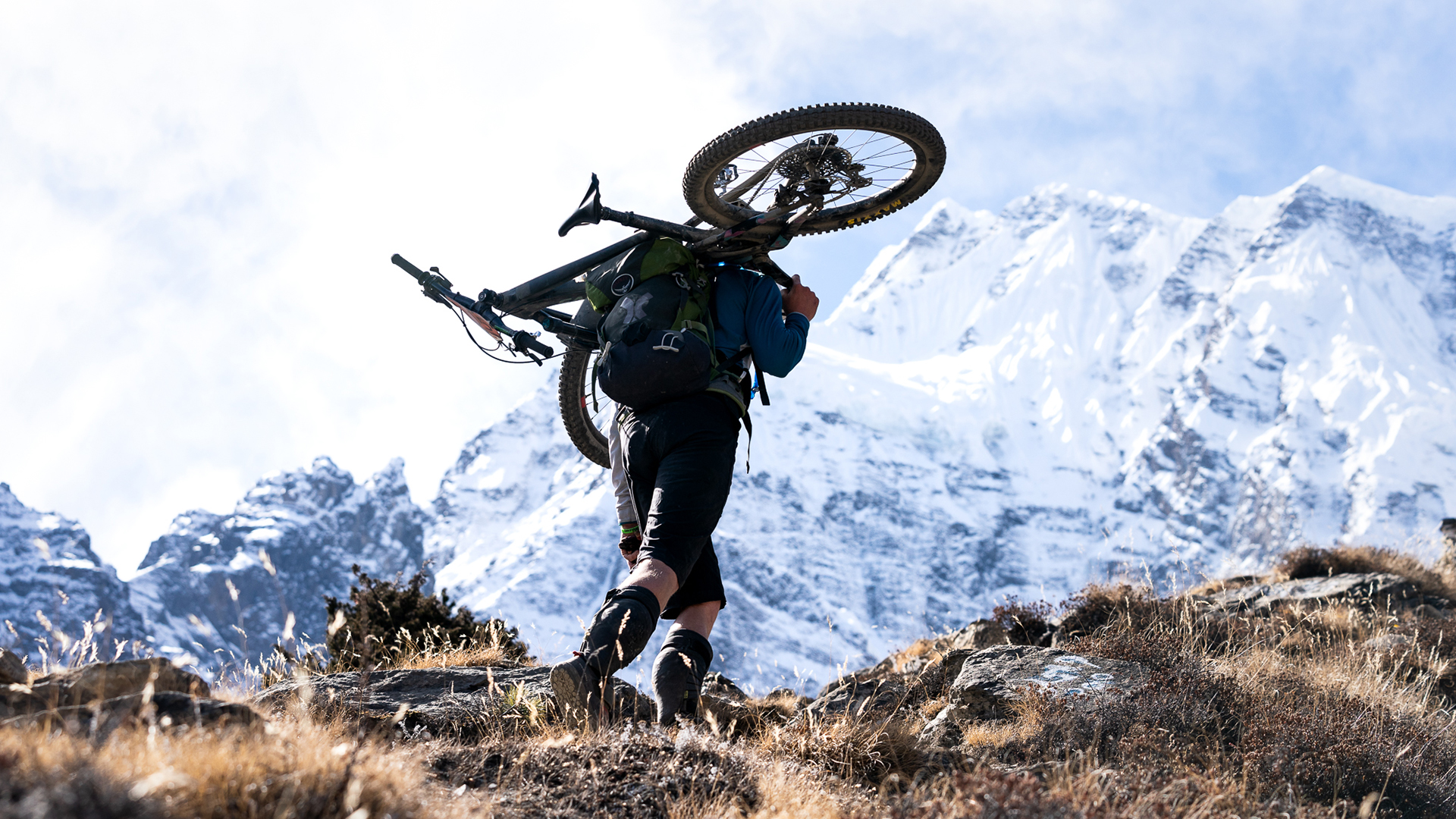
Cross-Training For Yak Ru - Why Pure Cyclists Need To Pay Attention Right Now
We have already established the high demands of the Yak Ru Annapurna Challenge in the previous two articles. A good deal of preparation for the Yak Ru must be dedicated to specific training for a particular set of demands. Most crucially: these demands are unlike those at any other multi-stage mountain bike event.
There are many challenging endurance cycling races which can be surmounted with textbook training methods. Namely, riding – lots of riding – both on the road, on trails, and if need be, on an indoor bike. In addition to this ‘old-school’ approach of a dedicated high-mileage diet, more modern cycling training doctrine will typically add additional training such as swimming, running, or gym workouts. To make sure the body stays supple and injury-free, many savvy cyclists will also add sports massage, yoga, or pilates to their training mix. If this sounds like you (so far), that is a good thing.
But for overcoming Yak Ru, a high priority should be figuring out how one shall cope with efficient movement OFF the bike. The brutal truth: when the terrain is no longer rideable, participants need to be able to continue traversing the racecourse quickly and safely. When faced with this, a pure cyclist who trains for cycling only – to the exclusion of other forms of physical conditioning – will soon find himself in trouble.
Clearly, the race is as much as competition on-foot as it is on wheels. Keep in mind these standard Yak Ru terrain features that may prove a significant challenge to the unprepared participant:
– Steep rock gardens and rock steps
– ‘Un-rideable’ uphills
– Snow & ice
– Slippery surfaces in general (including mud, metal surfaces, and wet or moss-covered rocks)
– High-exposure, high-consequence traversing
To prepare for these features, here are three forms of cross-training one can do:
1. Trail running
Running off-road makes your body for the quick movements on uneven, steep, and often slippery sections of the route. Ordinary running only linearly works muscles; trail running activates more muscles laterally, especially the smaller muscles used to keep the core stable and the legs planted firmly. The steeper the terrain, the better this training effect – strength is forged on running the uphills, while confidence and daring are built on running the downhills.
Running on mild trails only works up to a point, so seek out more and more technical terrain as you get accustomed to the sensations of trail running. Better yet, run with a weighted hydration pack similar to what you would use for the event.
2. Hiking
Hiking is the only plausible way of getting a bike up and over the long, steep ascents, including the infamous Yak Ru final assault up Thorong-La Pass. Most of your time on foot will be spent hiking your bike instead of running with it. To train for these long stints on foot, load up a backpack (more prominent than your regular hydration pack) with a weight that simulates that of your bike, and go for a sustained hike up and down some steep trails or stairs. When you are comfortable, add a bit more weight to build strength further.
Taken to extremes, one might even opt for lugging an actual bicycle up and down for training. This is a severe form of conditioning, but it puts heaps of strength endurance and familiarity with weight-bearing in the bank – these will prove useful on the Yak Ru’s sustained uphill hike-a-bikes.
3. Functional fitness training
Even bolder in nature, but certainly an approach that has been gaining firm traction in various sporting circles is the idea of functional fitness training. It is not merely pumping iron at the gym; it is about conditioning the body to execute movements that are common in every-day life. Swiftly lifting a bike onto one shoulder or overhead, nimbly carrying it on uneven, un-rideable sections; walking briskly uphill while pushing a bike; bracing your body in a sustained descending position on a high-speed, bumpy downhill – these are all functional movements. They require more than just well-trained cycling legs and long endurance. Upper body strength, explosive power, core stability, and resistance to injury are all traits (amongst many others) required, and should not be neglected. A suitable functional fitness routine will address these requirements.
Myriad training aids and protocols are employed in the name of functional fitness. Weighted sledges, truck tires, ropes, sandbags, along with traditional implements such as barbells and kettlebells are commonplace. Isolated exercises focus on particular weak spots; circuits that combine various activities to develop overall fitness and resistance to fatigue. The whole idea is not to build up outright mass or weight, but to remain lean, resilient, healthy, and injury-free. As a Yak Ru participant, this is crucial to your success.
Yak Ru race 2013Conclusion – combining it all
Consistent and progressive trail running & hiking (both with suitable weighted loads/backpacks), together with functional fitness conditioning, should be made an integral part of your mountain bike training. This combined approach will forge a healthy body and mind that can thrive in – and not just survive – the Yak Ru.

